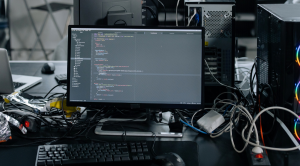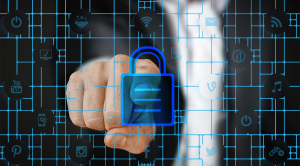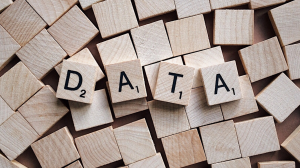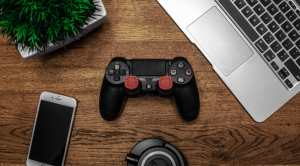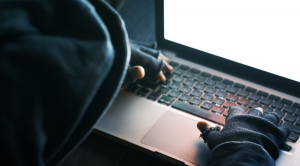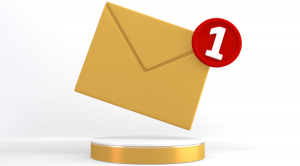How to increase online banking security
There is no need to explain why an online banking system is important. Storing money in an online bank account is not only a convenience, but also a serious security issue. If you lose access to your account or it becomes unavailable for a short time, the consequences can be scary.
Not only will you lose the money you have earned, but a locked account can also cause unpredictable consequences. This can lead to you being unable to pay taxes, buy insurance or pay school fees, affecting your daily life.
Below, we will point out some important steps to protect and maintain your bank account, avoid being locked out, and prevent unauthorized fraudulent actions on your account.
How to protect yourself when banking online
1. Do not reuse passwords
When using the same password on multiple sites, it becomes easy to compromise your security. Enough of a vulnerability on any website, an attacker can harvest your passwords. Worse, they can use this password to search other websites, especially those with weaker security, like financial sites.
Using the same password on multiple websites can even make it easier for criminals without having to match your bank account's password. If you use slight variations of this password on different websites, it can become easy to guess.
To stay safe, use a password generator to generate strong, unique, and random passwords for each site. Password generator helps you follow your bank's password requirements, such as using special characters, setting a minimum or maximum number of characters.
2. Secure your email and phone number
Most importantly, protect the mobile phone number and email address tied to your bank account. In some situations, losing control over your phone number or email address can mean revealing important personal information, such as information stored in your email inbox. Others can use this information to impersonate you and perform fraudulent activities, including receiving verification codes, updates, and even making calls on your behalf.
3. Take advantage of the two-factor authentication provided
Whether your financial institution requires it or not, you should always use at least one form of two-factor authentication. This requires you to have a second authentication method in addition to your password to access your account. When to use authentication factors can vary depending on how you set them up, whether it's every time you sign in, every 30 days, or every time you sign in from a new location or device.
It's best to use an app-generated code or hardware key for authentication. If you can't avoid using a mobile phone number, which is less secure, make sure the phone number is closely guarded, as instructed in the next steps.
4. Be wary of scams
Use bookmarks to navigate to your financial services instead of clicking links. Please, always remain skeptical when receiving any email from a bank. Even if it looks like the email might be legitimate, avoid following links or responding to the email directly. Instead, always log in to your account through your bookmarks and look for contact information directly on your bank's website.
Use a password manager to automatically fill in login information instead of entering them yourself. While this isn't 100% secure, a password manager can detect when you're visiting a phishing site before you provide personal information.
5. Use a VPN when abroad
Many financial institutions have a policy of closing accounts if they suspect the visitor is not the account owner. There are signs of fraudulent activity, including logging in from unusual locations. Other reasons may include accessing the service from embargoed countries, and there are many more.
While using a VPN to access your financial services may raise suspicion, you should consider logging in from a new or embargoed country instead. Choose a VPN location close to your usual location or always make sure you're logging in from a specific VPN location.
6. Stay away from public Wi-Fi
Using public Wi-Fi connections in locations like hotels, airports, and coffee shops can put your privacy at risk. Hackers can leverage techniques such as packet sniffing attacks and man-in-the-middle attacks to gain unauthorized access and information. What's even more dangerous, you often don't know how secure any public Wi-Fi network you connect to is.
In addition, cybercriminals can also create fake Wi-Fi networks, masquerading as legitimate networks to steal users' personal information. If you need to use public Wi-Fi, it's crucial to verify that the network you choose is the real one, perhaps by confirming with coffee shop or hotel staff.
7. Sign up to receive bank alerts
Many financial institutions allow users to enable transaction alerts, which helps them alert and track every transaction that occurs in-store or online. These alerts have the ability to notify you of any suspicious activity related to your account. Typically, you'll receive these notifications as text messages or through your bank's main mobile app.
8. Keep your apps and operating system up to date
By regularly updating your operating system and applications, you are ensuring that the software is always equipped with the latest patches, which are patches for vulnerabilities that developers have identified. recently. Every so often, software developers react quickly by providing patches to protect users from large-scale security incidents. Most applications and operating systems provide periodic alerts advising you to update, however, for best safety, the best option is to set up automatic updates for all of your applications. Friend.
9. Only visit sites with Secure Sockets Layer (SSL) encryption
Websites with SSL Certificates use encryption to protect the transmission of data from the client to the server, ensuring that any third party cannot read that information. Most online banking platforms also apply SSL encryption to ensure security on their websites. However, skilled hackers can leverage attack techniques to hijack SSL and cause the server to abandon the encrypted connection. As the name suggests, "SSL stripping" involves removing the SSL layer of a secure website, leaving the end user communicating with the unencrypted version.
10. Get identity theft protection
Some banks, credit card issuers, and even your employee benefit plans may offer identity theft protection for free or at a low cost. Third-party services may also offer protection measures for a monthly fee. These include monitoring to see if your sensitive information is appearing in places it shouldn't be, and tracking changes in your credit score, and being prepared to compensate you if Your privacy has been violated.
11. Do not leave the device unattended
Perhaps the most important thing you should do to protect yourself when conducting online banking transactions is to avoid leaving your device open and unmonitored. Smartphones and laptops are commonly used to conduct online banking transactions, and they often store important personal information, including passwords and account numbers. They are also used for two-factor authentication (for example, via your phone number or email), so accessing this device will significantly reduce the security of your account.

